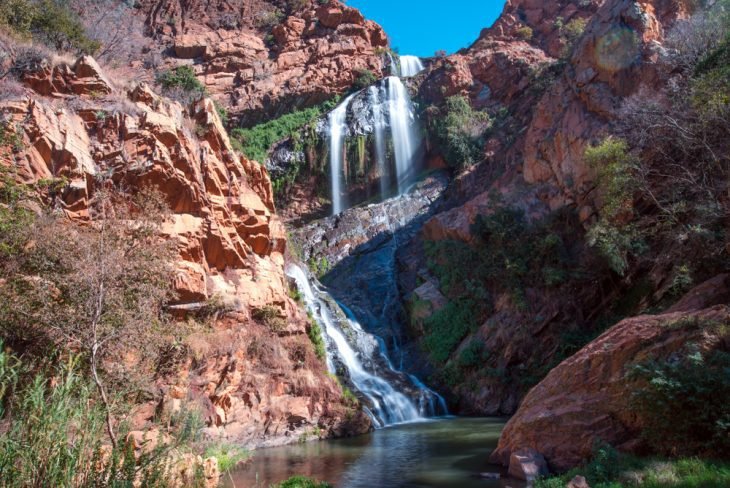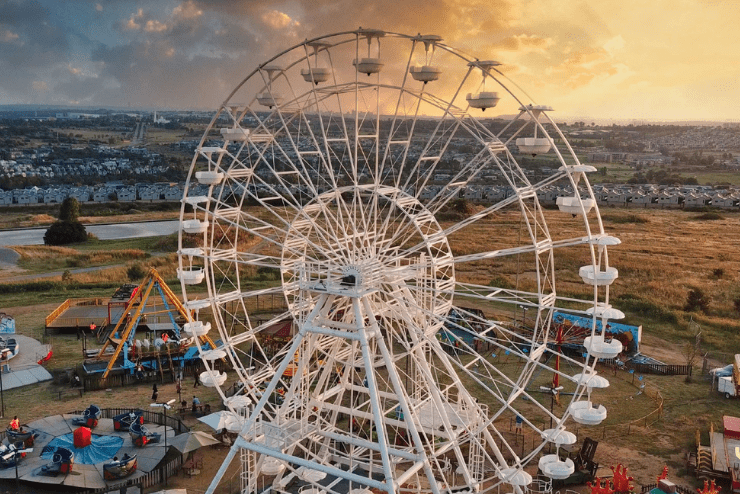Johannesburg North Attractions - Questions
Wiki Article
An Unbiased View of Johannesburg North Attractions
Table of ContentsHow Johannesburg North Attractions can Save You Time, Stress, and Money.4 Simple Techniques For Johannesburg North AttractionsThe 9-Minute Rule for Johannesburg North AttractionsThe Facts About Johannesburg North Attractions UncoveredExcitement About Johannesburg North AttractionsThe Basic Principles Of Johannesburg North Attractions
The city expanded on the side of the Witwatersrand Main Reef, a subterranean stratum of gold-bearing quartz-silica empire that arcs for hundreds of miles below the Highveld - Johannesburg North attractions. Most of the gold mines in the city ceased operation in the 1970s, however in its day the Witwatersrand gold sector accounted for more than 40 percent of the world's annual gold production.Johannesburg has a warm environment. Summer temperature levels balance regarding 75 F (24 C); wintertime temperature levels average concerning 55 F (13 C) and just sometimes dip listed below freezing. The city delights in concerning eight hours of sunlight daily in both winter season and summer. Rain averages about 28 inches (700 millimetres) per year, however the total differs significantly from year to year.
What rainfall the city gets falls almost specifically in the summer season months, usually in spectacular late-afternoon electric storms., where lots of residents still count on coal for gas.

About Johannesburg North Attractions
The equilibrium of the city is occupied by whites. Accommodation differs in character and high quality. Soweto is notorious for its unlimited rows of municipally constructed, two-room matchbox homes, yet it additionally has a few thriving enclaves as well as bristling squatter camps, where tens of thousands live without water, electrical power, or cleanliness facilities.Physical development, although rather limited by transportation, continued quickly as migration to South Africa, and Johannesburg particularly, increased considerably. This problem was fixed in the 1930s when the auto was introduced in automation to South Africa. Vehicles were, for the most component, confined to the rich, and allowed them to relocate to the north of the city and commute into the centre.
The majority of bad suburban areas were mixed, with bad blacks and whites living together, although the well-off residential areas were normally scheduled for whites. This transformed with the political election of the National Event in the 1948 political elections, that began to formalise the system referred to as racism. Racism formally assigned which residential areas each race can reside in under the Group Locations Act.
The previous system of eleven numbered areas was reorganised in 2006. Marshalltown, as seen from the top of the Carlton Centre. The M1 and M2 run behind the buildings, and the southerly suburban areas extend past the highway boundary. The internal city of Johannesburg lies within the city's Area F. The number of individuals living in the inner city on a casual basis is unidentified, as numerous are illegal immigrants. The unemployment, education, and age accounts of the location are all unidentified, due to the problem of getting reliable information concerning the area.
Johannesburg North Attractions Fundamentals Explained
Centred on the CBD, the region consists of the suburban areas of Yeoville, Bellevue, Troyeville, Jeppestown, and Berea to the eastern. To the west it spreads out to Pageview (Johannesburg North attractions) and Fordsburg. There are little industrial parks to the south, such as City West-Denver and Benrose. Around 800,000 commuters travel through the internal city each day, and it functions as a local purchasing node for visitors from the southern residential areas. Yeoville and Bellevue have a mix of home buildings and solitary residential devices on small lots. The region is situated on a hilly divide that runs from eastern to west.
What Does Johannesburg North Attractions Mean?
The eastern suburbs are some of the earliest locations of Johannesburg, there are big communities of Jewish and other European histories, the Discover More majority of the populace is English talking. There are three golf programs as well as a number of safeguarded ridges with viewsites.Originally constructed to house male migrant employees, numerous have been improved as residences for couples and households. The suburb was not traditionally permitted to develop work centres within the area, so almost all of its residents are travelers to other parts of the city.
The Basic Principles Of Johannesburg North Attractions
The N1 Western Bypass attaches the northern suburbs with the north-western suburbs. The suburbs in the northern residential areas are mostly formal, without any investigate this site considerable areas of informal real estate, or real estate that does not have an irreversible framework. This is a well-known location, there is a pattern of land usage adjustment from property to commercial, particularly along main arterial roads and around recognized nodes.Roadways to the eastern and west click here now are less well established, as there are no freeways travelling in that direction. Towards the north border of the city, the density of advancement reduces, leaving big locations of untaught land around Midrand.
The Of Johannesburg North Attractions
, which is located on a hill forgeting the internal city and Hillbrow.Report this wiki page